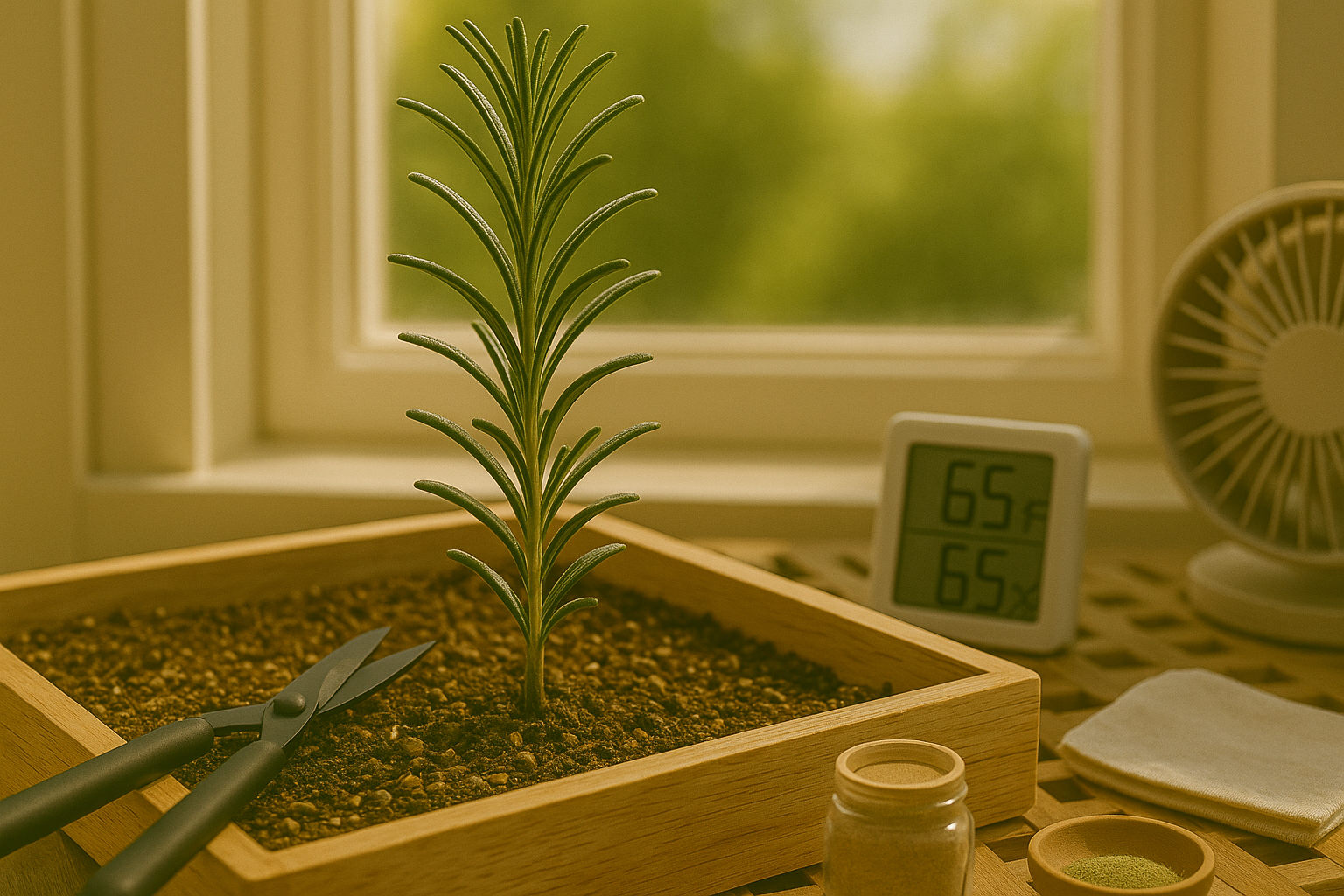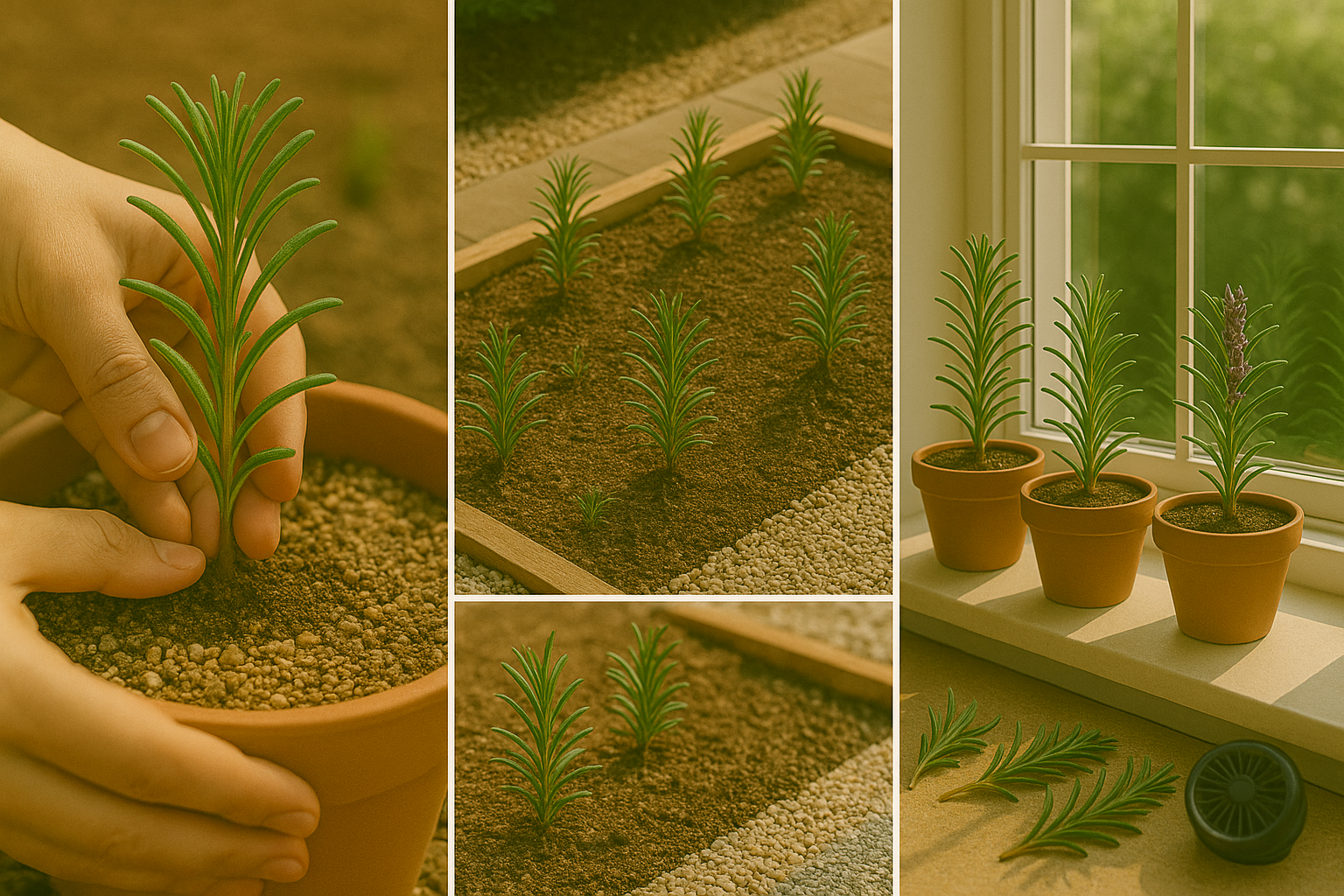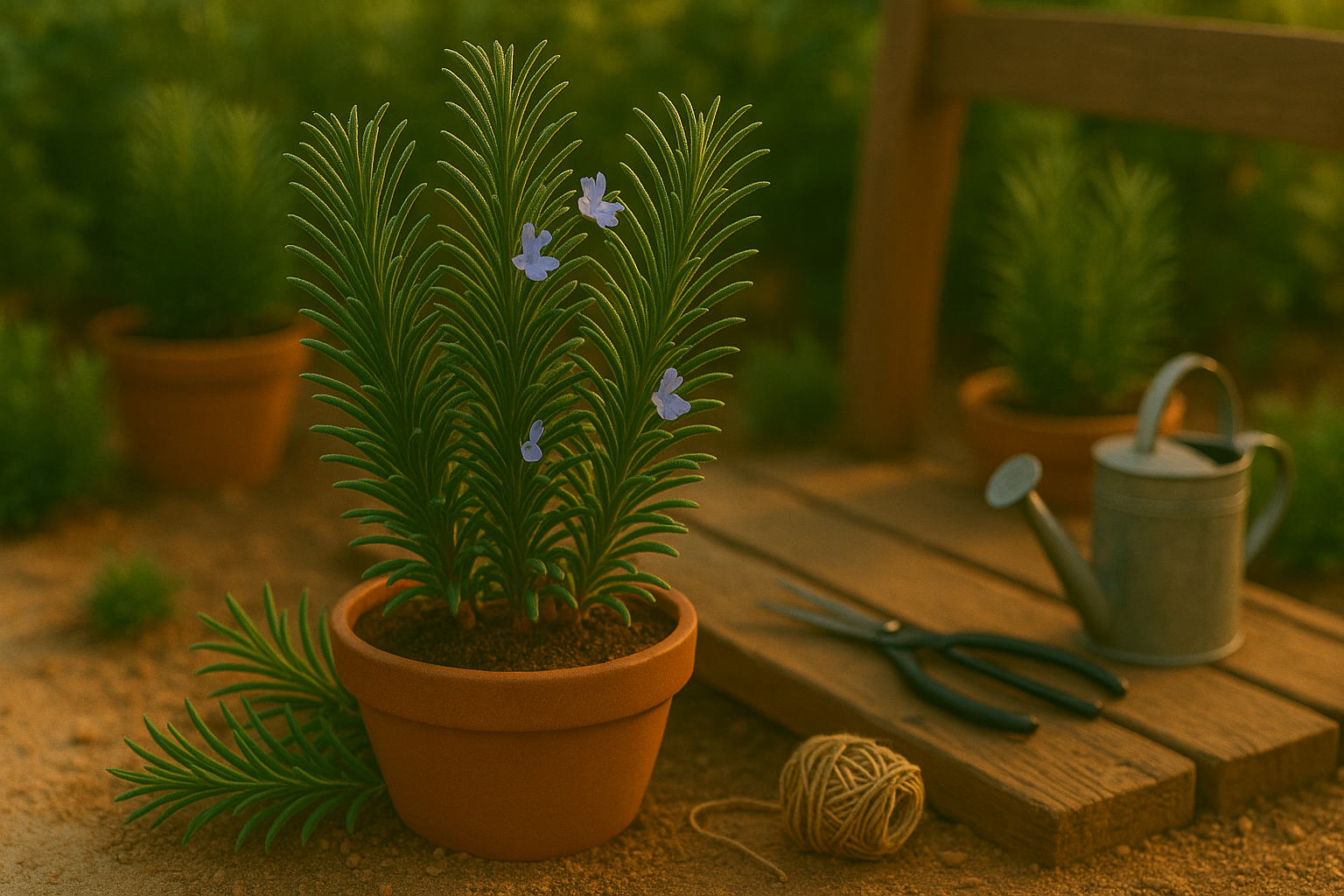Introduction to Year-Round Rosemary Growing
Year-round rosemary growing isn’t just a dream for seasoned gardeners or culinary enthusiasts—it’s a practical goal anyone can achieve with the right knowledge. Rosemary is famous for its robust flavor, adding an aromatic punch to everything from roasted meats to fresh-baked breads. Its striking evergreen foliage and subtle blue blooms also make it a favorite ornamental plant for garden borders and pots. Beyond the kitchen and garden, rosemary boasts a long history in traditional medicine, known for its antioxidant and memory-boosting qualities.
But can you grow rosemary year-round wherever you live? The answer depends on your climate, available space, and gardening approach. In warm, Mediterranean-style regions, rosemary is famously tough and thrives outdoors all year long. In colder climates, frost and harsh winters can be challenging, requiring a more strategic approach—think container growing, windowsill pots, and even indoor hydroponics. With just a little effort, year-round rosemary growing is possible nearly anywhere, from a sun-drenched backyard in California to an apartment windowsill in Boston.
In this article, we’ll break down essential tips for successful rosemary growth in every season and setting. You’ll discover the secrets to choosing the right rosemary varieties, keeping plants healthy through winter, using indoor light for continued growth, and troubleshooting common issues like root rot and pests. Whether you’re an aspiring home chef, a balcony gardener, or simply love the scent of fresh herbs, you’ll find practical, real-world solutions for year-round rosemary growing—so you can enjoy fresh sprigs whenever inspiration strikes.
Understanding Rosemary’s Growing Needs

Rosemary thrives when its basic needs for light, warmth, soil drainage, and airflow are all met. This sun-loving herb craves at least six to eight hours of direct sunlight each day—so place outdoor rosemary in the brightest spot available, and for indoor plants, a south-facing window is ideal.
Warmth is also key, as rosemary prefers daytime temperatures above 60°F (15°C) and generally cannot survive prolonged freezes. Good air circulation is important, as stagnant, damp conditions invite fungal diseases; you’ll want to space plants at least two to three feet apart outdoors or avoid crowding pots inside.
Dry, well-draining soil is another must—choose a sandy or gritty soil mix and never let roots sit in wet soil, which can quickly lead to rot.
Seasonal changes also affect how you care for rosemary:
- In summer, plants can soak up full sun outdoors.
- In winter—especially in areas colder than USDA hardiness zone 8—rosemary should be brought indoors or grown in containers to avoid cold damage.
- If you live in a chilly region, consider growing rosemary in pots year-round so you can relocate them easily.
- In warmer climates (zones 8-11), rosemary can stay outside but may still need protection from harsh winter winds and unexpected cold snaps.
Regardless of the season, always let the soil dry between waterings and keep the plant away from drafty or overly humid spots indoors. By understanding how light, warmth, airflow, and soil drainage shift with the seasons and climate, you can enjoy healthy rosemary whether you’re gardening in a sunny backyard or growing herbs on a windowsill.
Choosing the Right Rosemary Varieties
When it comes to selecting the right rosemary variety, understanding the differences between indoor and outdoor suitability can make all the difference for healthy, year-round growth.
For outdoor gardeners in areas with mild winters, classic upright varieties like Tuscan Blue and Arp are popular choices. Arp stands out for its excellent cold hardiness, tolerating temperatures as low as 10°F, making it a great option for those who face frosty winters.
If you’re limited to a windowsill or apartment balcony, compact cultivars such as Blue Boy or Golden Rain are much better indoor companions. These varieties naturally stay shorter, making them ideal for pots, and they don’t outgrow small spaces as quickly as the larger shrub-like types do.
Container gardeners should also look for Prostratus, a trailing form that stays tidy and can spill attractively over the edges of a pot without crowding your indoor space.
The choice of rosemary variety truly matters; a cold-tender type may die back in winter if left outdoors, while an over-vigorous plant can outpace the bounds of a small indoor planter. In short, matching the right rosemary to your environment—whether that’s a chilly patio, sunny garden, or cozy kitchen—means less stress for you and more robust, flavorful herbs all year long.
Before buying, check the plant label or seed packet for specific variety information, as this small step can save you disappointment and ensure your rosemary thrives wherever you grow it.
Planting Rosemary Indoors and Outdoors

Planting rosemary is a flexible project that works well both indoors and outdoors, as long as you provide this hardy herb with what it needs. For outdoor planting in the ground, choose a sunny spot with well-draining soil—rosemary hates wet feet. To improve heavy soils, mix in sand, perlite, or compost.
Dig a hole twice the width of the root ball, place your plant in it, backfill, and water thoroughly. If you prefer planting in a container, use a pot at least 12 inches wide with drainage holes. Fill it with a light, well-aerated mix by combining two parts potting soil, one part coarse sand, and one part perlite.
Place containers on patios or decks where they’ll receive at least six hours of sun. When growing rosemary indoors, put it near a south-facing window; a windowsill or sunroom works best. Water only when the top inch of soil is dry, and avoid letting the pot sit in standing water.
As fall approaches, transition outdoor rosemary inside before the first frost. Acclimate the plant by moving it to a shadier spot outside for a week, then bring it indoors for a few hours a day, gradually increasing the time spent inside. In spring, reverse this process by slowly reintroducing rosemary to the outdoors—start with sheltered shade, then move to full sun over 7–10 days to prevent shock.
Regularly snip sprigs to encourage denser growth and keep your plant manageable, whether it’s in the ground or in a container. With these steps, you’ll enjoy fresh rosemary all year, no matter your growing space.
Year-Round Care and Maintenance
Taking care of your plants year-round means staying in tune with the changing needs of each season. In spring, boost your plants’ growth with a balanced fertilizer and start watering more frequently as temperatures rise. This is also the perfect time for gentle pruning to shape your plant and remove any dead or damaged growth.
Summer brings rapid growth and sometimes scorching heat, so check soil moisture every few days. Water thoroughly when it feels dry an inch below the surface, and increase your pest checks—warmer weather attracts more bugs and fungal issues. Inspect leaves regularly for spotting or holes, which signal a need for treatment with insecticidal soap or neem oil.
During fall, gradually reduce both watering and feeding to help your plants prepare for a slower growth season. It’s a good chance to repot if your plant is rootbound and to gently trim back overgrowth while cleaning debris from the soil surface.
Winter requires extra attention, as lower light and dry indoor air pose unique challenges. Move your plants closer to windows for maximum sunlight, but avoid cold drafts from leaky windowsills. If daylight is limited, use a grow light to supplement and keep your plants thriving.
Low humidity is another winter concern; group your plants together or place water trays nearby to boost air moisture, or use a humidifier if your home is especially dry. Always check before watering—plants typically need less water in winter, and too much can easily lead to root rot.
If you spot yellowing leaves, it’s often a sign of overwatering or a sudden drop in temperature; let soil dry out more between watering and raise temperatures if possible. For root rot, trim away any mushy, dark roots and repot in fresh, well-draining soil. Stay observant and adjust care as needed, and your plants will thrive through every season.
Harvesting and Using Rosemary All Year
To make the most of your rosemary plant throughout the year, start with careful harvesting. Use clean, sharp scissors to snip sprigs, choosing stems that are at least eight inches tall. Take only about one-third of the plant at a time—this gives your rosemary plenty of time to recover and keep growing strong.
For established, healthy bushes, you can harvest every two to three weeks during the growing season, but slow down in winter when growth naturally decreases.
Preserving Your Rosemary
Preserve your bounty by drying: tie small bundles of rosemary and hang them upside down in a cool, dry spot until the needles are crisp. Then, strip the needles and store them in an airtight jar.
Freezing is another simple option—chop the leaves and freeze them in ice cube trays with a little water or olive oil for quick access to fresh flavor.
Alternatively, infuse whole sprigs in olive oil or vinegar for a fragrant condiment that lasts for months.
Using Rosemary Year-Round
With these methods, you’ll have aromatic rosemary at your fingertips, perfect for flavoring roasted vegetables, breads, or stews—even in the dead of winter.
Having a year-round supply of rosemary means you can enjoy its bright, herbal notes and health perks, like antioxidant and anti-inflammatory benefits, anytime you need a fresh burst of flavor in your kitchen.
Common Problems and Solutions for Year-Round Growth
Keeping rosemary thriving year-round comes with challenges like pest infestations, diseases, and environmental stress. Spider mites are a common indoor problem, marked by yellowing leaves and fine webbing. Combat these pests by regularly misting the plant (mites hate moisture), wiping leaves with a damp cloth, and using insecticidal soap if needed.
Outdoor rosemary is vulnerable to powdery mildew, a white powdery coating on leaves usually caused by poor air circulation or overwatering. Space your plants well, prune regularly, and water at the base, not the leaves, to minimize risk.
Cold shock can affect both indoor and outdoor rosemary, turning leaves brown or black. Protect outdoor plants with frost cloths and bring pots indoors before the first freeze; indoors, avoid placing plants near cold windows or drafts.
Prevention is key: keep rosemary in well-draining soil, water only when the top inch is dry, and provide at least 6 hours of sunlight daily—consider a grow light in winter.
If your plant looks stressed, act fast:
- Trim away dead or diseased growth
- Repot if roots are crowded or soil is soggy
- Check for pests or mold
If the problem is unknown, hold off on fertilizing—a stressed plant needs time to recover. With careful monitoring and quick response, healthy, fragrant rosemary can be a year-round kitchen staple, whether in a garden bed, windowsill pot, or balcony container.
Conclusion
Growing rosemary year-round is entirely possible for most gardeners, whether you have a sunny windowsill or a spot in your backyard. Don’t be afraid to experiment with different containers, pruning methods, or watering routines to find what works best in your space.
Keep an eye on light and temperature, providing a little extra care during the colder months. The effort is well worth it—nothing compares to the aroma and flavor of fresh, homegrown rosemary plucked straight from your own plant.
With some patience and creativity, you’ll enjoy this fragrant herb all year long.
